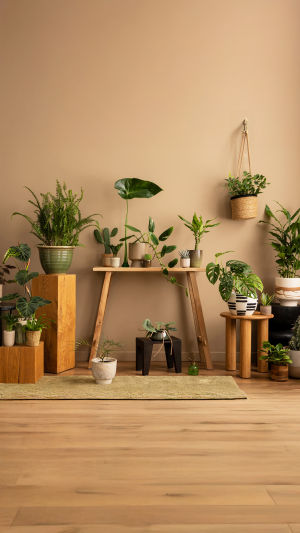Bringing a plant into your home is more than just decoration—it's about creating a living space that feels fresh, calming, and alive. But choosing the right indoor plant isn't as simple as picking the prettiest leaf or trendiest name.
Each home has its own unique light, humidity, and space conditions, and understanding these is key to picking a plant that will truly thrive instead of quietly fading away on a windowsill.
If you've ever killed a plant without knowing why, this guide is for you. Let's break down how to choose indoor plants that fit your space and lifestyle, turning your home into a green haven that feels effortless to maintain.
<h3>Start With Your Space: Light Is Everything</h3>
When it comes to indoor plants, light availability is the most critical factor. Unlike outdoor gardens, indoor light varies widely:
<b>• Bright, direct sunlight:</b> South-facing windows often offer the most intense light, suitable for sun-loving plants like succulents and cacti.
<b>• Indirect, filtered light:</b> East or west windows provide moderate light ideal for plants like pothos, peace lilies, or snake plants.
<b>• Low light:</b> North-facing windows or rooms far from windows might only support low-light tolerant plants such as ZZ plants or certain ferns.
Knowing this helps narrow down your options drastically. For example, a fiddle leaf fig demands bright indirect light and won't flourish in dim corners, while a snake plant can tolerate those low-light spots.
<h3>Consider Your Lifestyle: Watering and Care Needs</h3>
Plants vary widely in how much attention they require. Your lifestyle should guide your choice:
<b>• Busy or forgetful:</b> Opt for hardy, drought-tolerant plants that survive occasional neglect. Succulents, snake plants, and spider plants are great choices.
<b>• Hands-on gardener:</b> If you enjoy regular care, try more sensitive plants like orchids or ferns, which reward attention with lush growth.
<b>• Pet owners:</b> Some plants are toxic to cats or dogs, so it's wise to pick pet-safe varieties like Boston ferns or calatheas.
The key is honest self-assessment. A demanding plant in the wrong hands quickly becomes a source of frustration instead of joy.
<h3>Match Plant Size to Your Space</h3>
Don't underestimate how quickly some indoor plants grow, or how their size fits your living space:
<b>• Small apartments:</b> Compact plants like succulents or air plants suit shelves, desks, and small corners.
<b>• Spacious rooms:</b> Larger plants like monstera or rubber trees can become living focal points.
<b>• Vertical space:</b> Consider trailing plants like pothos or string of hearts to add greenery without taking floor space.
Measuring your space before buying helps avoid surprises and creates a balanced look.
<h3>Think About Air Quality and Mood</h3>
Indoor plants aren't just pretty—they can improve air quality by absorbing pollutants and increasing humidity. NASA's famous study identified plants like spider plants, peace lilies, and bamboo palms as effective natural air purifiers.
Beyond that, interacting with plants has been shown to reduce stress and boost mood. Knowing this, you might pick plants that thrive on a windowsill in your home office or bedside table, creating pockets of calm where you need them most.
<h3>Test Before You Commit</h3>
If you're unsure, try small starter plants or cuttings before investing in larger specimens. This lets you observe how your home environment affects plant health without a big commitment.
Also, don't hesitate to ask local nurseries or plant experts about your home's conditions—they often know which plants grow well in your area's climate and indoor environments.
<h3>In Summary: Tailor Plants to Your Home and Life</h3>
Choosing the right indoor plant boils down to one deep insight: plants are living organisms with specific needs. Matching those needs to your home's light, your care habits, and your space is the best way to ensure they thrive.
Imagine waking up to a vibrant green corner that feels natural, refreshing, and alive—not a plant struggling to survive. With the right choices, that can be your everyday reality.
So, what's your home's lighting situation like? What kind of care routine feels doable for you? Start there, and your perfect indoor plant is waiting.





